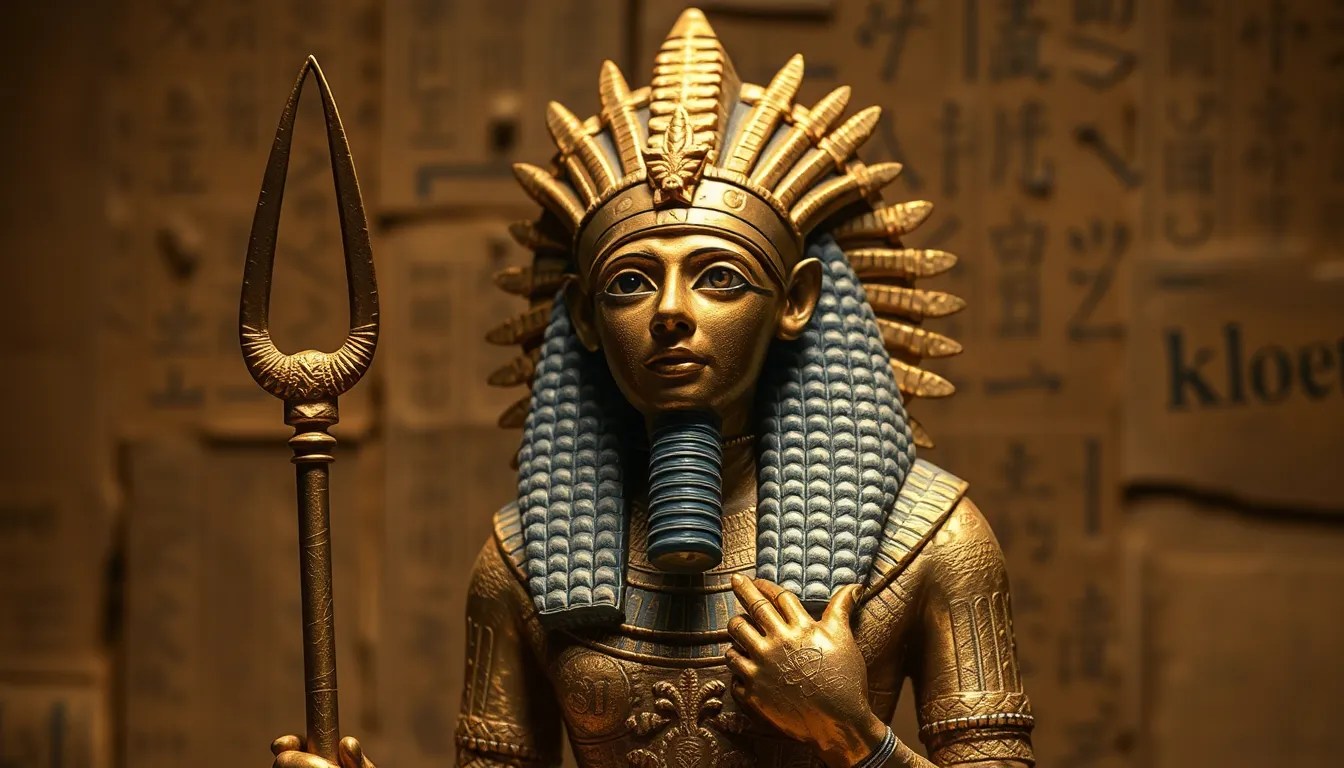The Role of the Goddess Nephthys in Tomb Texts
I. Introduction
In the rich tapestry of Egyptian mythology, Nephthys occupies a unique and significant role. As a goddess of the night, mourning, and protection, she is often overshadowed by her more prominent sister, Isis. However, Nephthys’s contributions to ancient Egyptian religion, particularly in the context of funerary practices, are crucial to understanding the beliefs and rituals surrounding death and the afterlife. This article aims to explore the role of Nephthys in tomb texts, which served as vital components of burial practices in ancient Egypt.
II. Historical Context of Nephthys
Nephthys, whose name translates to “Lady of the House,” is one of the ancient Egyptian deities associated with funerary rites. She is the daughter of Geb (the Earth) and Nut (the Sky) and is often depicted as a woman with the hieroglyph for her name on her head. Her attributes include:
- The protection of the deceased
- Association with mourning and funerals
- Connection to the night and the hidden aspects of life and death
Nephthys is often portrayed in close relation to her sister Isis, as well as her brother Osiris. While Isis is celebrated for her nurturing qualities and her role in resurrection, Nephthys complements these attributes by embodying sorrow and protection. Together, they represent the duality of life and death, highlighting the significance of both in ancient Egyptian spirituality.
III. Tomb Texts: An Overview
Tomb texts, including the Coffin Texts and Pyramid Texts, are collections of spells, prayers, and incantations inscribed on the walls of tombs or on coffins. Their primary purpose was to aid the deceased in their journey to the afterlife, ensuring safe passage and protection from malevolent forces.
- Coffin Texts: These texts emerged during the Middle Kingdom and are often found in non-royal tombs. They contain spells aimed at providing the deceased with the necessary tools for navigating the afterlife.
- Pyramid Texts: Predating Coffin Texts, these inscriptions are located in royal tombs, serving to protect the pharaoh and facilitate their resurrection.
The role of tomb texts is paramount, as they not only serve as guides for the deceased but also as a means of connecting the living with the divine, particularly in the context of honoring and invoking the gods during the burial process.
IV. Nephthys’s Symbolism in Tomb Texts
Nephthys is often associated with themes of protection and mourning in tomb texts. Her imagery and symbolism convey deep meanings, including:
- Protection: Nephthys is frequently invoked for her protective qualities, safeguarding the deceased against evil spirits and dangers in the afterlife.
- Mourning: As a goddess of mourning, she embodies the sorrow of loss, reflecting the grief felt by loved ones left behind.
This duality makes Nephthys a nurturing figure, representing the comfort offered to the deceased while also acknowledging the pain of mortality. Her presence in tomb texts signifies the importance of both mourning and protection in the journey after death.
V. Nephthys in Coffin Texts
Within the Coffin Texts, specific passages featuring Nephthys highlight her protective and nurturing role. She is often mentioned alongside Isis, emphasizing their combined efforts to support the deceased. Some notable aspects include:
- Protective Spells: Nephthys is invoked in various spells that seek to shield the deceased from harm, showcasing her role as a guardian.
- Rituals: Rituals involving Nephthys often include offerings and prayers, appealing to her for guidance and support in the afterlife.
Through these texts, Nephthys’s impact on the deceased’s journey is profound, as her presence provides reassurance that they will be protected and cared for in the afterlife.
VI. Nephthys in Pyramid Texts
In the Pyramid Texts, Nephthys’s appearances are notably linked to royal funerary practices. Her involvement in themes of resurrection and rebirth is particularly significant:
- Resurrection Themes: Nephthys is often associated with the resurrection of Osiris, symbolizing the cyclical nature of life and death, which is central to the beliefs surrounding the pharaoh’s afterlife.
- Protection of the Pharaoh’s Spirit: As a guardian deity, Nephthys plays a crucial role in ensuring the pharaoh’s spirit is protected as it journeys to the afterlife, showcasing her importance in royal burials.
Her presence in these texts reinforces her significance not only as a goddess of mourning but also as a vital figure in the resurrection narrative essential to ancient Egyptian beliefs.
VII. Comparative Analysis: Nephthys vs. Other Deities
When comparing Nephthys to other deities, particularly her sister Isis, several distinctions and similarities arise:
- Contrast with Isis: While Isis is often celebrated for her nurturing and protective qualities, Nephthys embodies the sorrow associated with death and loss, providing a counterbalance in their divine relationship.
- Unique Contributions: Nephthys’s unique contributions lie in her role as a mourner and protector, emphasizing the emotional aspects of funerary practices.
- Complementary Roles: Together, Nephthys and Isis represent the dual aspects of life and death, highlighting the importance of both in the Egyptian worldview.
VIII. Conclusion
In summary, Nephthys’s significance in tomb texts is multifaceted, encompassing themes of protection, mourning, and the sacred journey to the afterlife. Her role as a nurturing yet sorrowful figure provides a comprehensive understanding of the emotional landscape of ancient Egyptian funerary practices. The enduring legacy of Nephthys reflects the complexities of life and death, contributing to modern understandings of Egyptian beliefs and rituals surrounding death. Through her presence in tomb texts, Nephthys continues to resonate in the cultural memory of ancient Egypt, reminding us of the profound reverence for the deceased and the divine support sought in their journey beyond this life.




